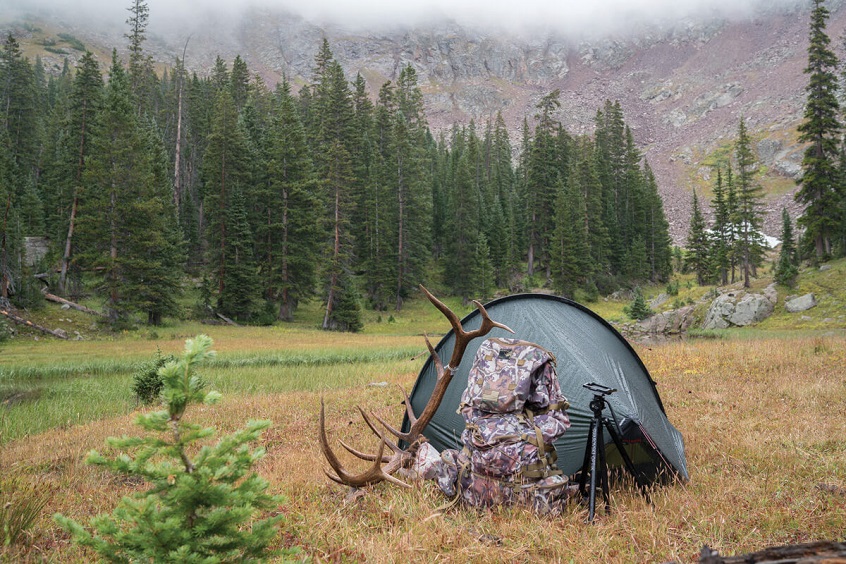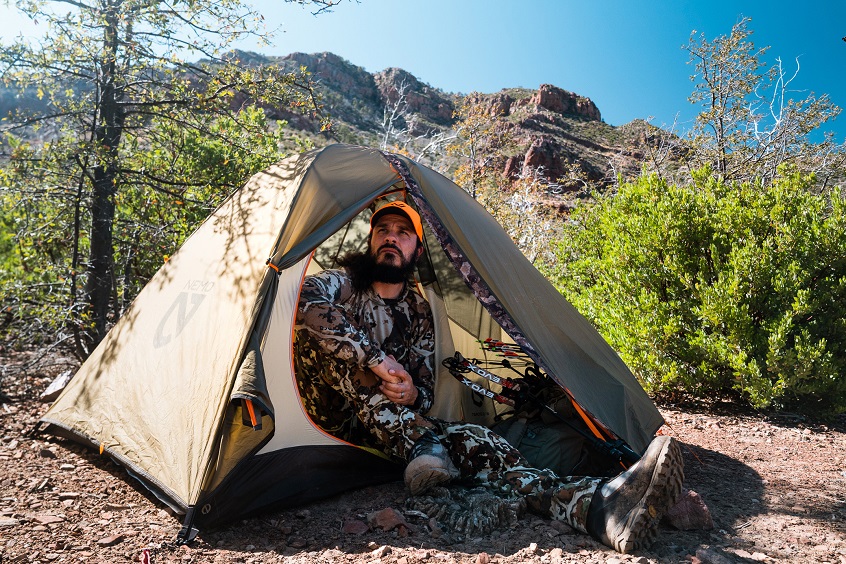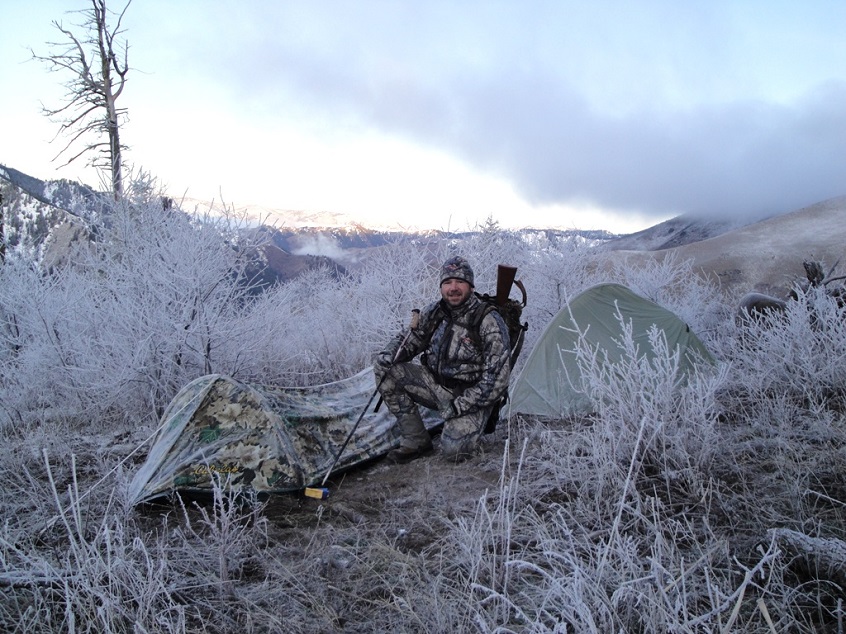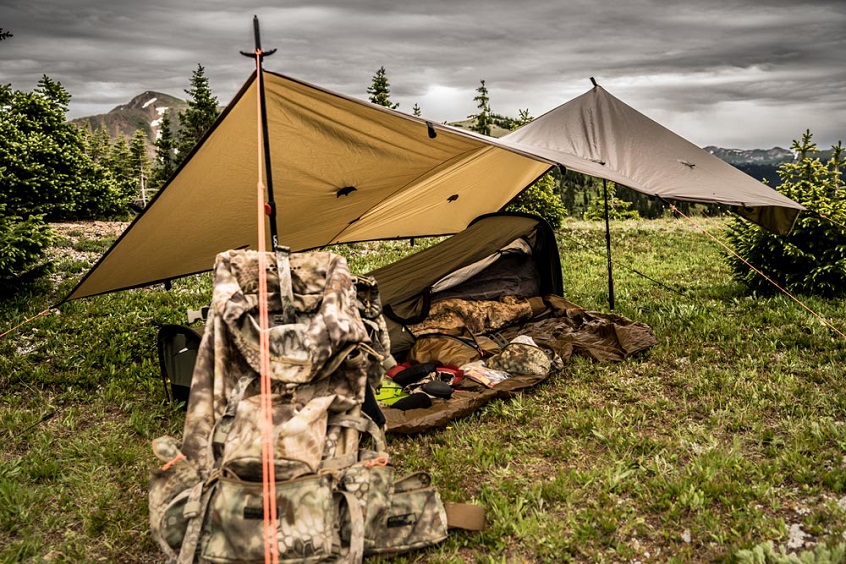
Hunting Equipment 101: How to Choose the Best Camping Shelter to Stay Comfortable Outdoors
Since many tents and shelters are available for hunting today, even the most experienced hunters can find picking a high-quality tent overwhelming. We’ll go over the different outdoor cover types to help you decide and, ideally, make you more comfortable and efficient.
Contents
How to Choose the Right Outdoor Shelter for Hunting?

When you search for a comfortable and lightweight outdoor shelter you’ll come across various types, including bivvy bags and covers, different kinds of tents and covered hammocks. What works for many hikers and campers is frequently not a good idea for hunters, which creates some unique obstacles when choosing the best shelter.
Whatever option you choose, invest in a shelter that fits your hunting preferences, location and conditions. To get the best cover for you, you must base your decision on your needs and consider several factors, such as the type of your hunt, how many people you’re going with, and when you’re hunting. Budget is another crucial consideration. Get one that will last as long as you intend to chase, then get outside to enjoy your quest and camping in nature.
Types of Outdoor Shelters
Bivvy Bags
A bivvy bag is a sleeping bag cover that is waterproof and breathable. A tiny, tent-like structure that covers your head is an option. The primary benefit of bivy bags is their portability. Since you unroll your sleeping bag and spend the night under the stars, they also help you develop a connection with nature. Bivies provide little to no protection for your hunting supplies, so you may need to purchase an additional bivvy for your rifle and rain covers for your backpack.
There are emergency bivvies specifically designed for hunters who continually put themselves in the harsh country and remote locations where even the slightest injury has the potential to leave you alone for many hours waiting helplessly for assistance, often in cold and wet conditions. Conventional survival blankets fall short of genuine insulated protection due to their limited size and deterioration over time.
Emergency bivvies allow the wearer to be fully enclosed and dry, get relief from the wind, and trap and reflect crucial body heat inside a seam-sealed bag. They also double as a great lightweight groundsheet underneath conventional bivvy, sleeping bags and sleeping mats for added thermal protection. Super compact and lightweight, it is a valuable addition to any hunter’s daypack for confidence and peace of mind.

Tarp Shelters
Another lightweight shelter choice is tarp shelters, which come in quite helpful if you’re transporting your camp across long distances on your back. They are a little bit heavier than bivies but provide additional weather protection. Tarp shelters also have the benefit of flexibility, allowing you to set them up in various ways according to the season and weather. You can combine them with bivy sacks to broaden their applicability. Still, remember that tarp shelters don’t provide pest protection and have poor insulating value.
Tents
Single Wall
Single-wall tents are more protective than tarp shelters but are also heavier. They weigh nearly twice as much as a conventional tarp setup, which typically weighs half a kilo or less. These tents have a waterproof floor and an upper canopy that is waterproof and breathable. Condensation can accumulate inside the tent during camping excursions in warm weather.
Double Wall
The most prevalent type of camping shelter tent in campgrounds across the nation is a double-wall tent. It contains a self-supporting framework covered by an interior wall, which is then protected from the elements by a separate rainfly. Double wall tents are available in various sizes and designs, providing complete protection and making your outdoor adventure more comfortable when the weather is uncooperative. Except if you’re camping in the cold, their weight can make them a poor choice for backpacking shelters.
Wall Tents
Although wall tents are large and heavy, they offer a genuine home-away-from-home environment. They are a go-to for backcountry hunting guides and present features that most other tents lack, such as the capacity to stand up, lots of space for beds and tables, and the choice to use a woodstove when the weather becomes chilly. You won’t be carrying this shelter on your back, so plan to camp close to your car or use horses or an ATV to transport it farther into the woods.
Important Portable Camping Shelter Considerations

Season of Use
The typical Australian deer shooting season lasts from April to August when temperatures throughout the day range from 8 to 17℃ and significantly drop during the night in the wilderness. On the other side, you can hunt feral pigs until the end of November, when the temperatures are higher.
Depending on where you plan to hunt, you can carry a much lighter and simpler outdoor shelter in the early part of the season than in the later part. Some hunters rarely prepare for the worst weather they might experience but do plan for the weather most likely to occur. Early in the hunting season, if you want to hunt primarily with archery, you can get away with a tiny shelter (such as a basic tarp), but if you like to spend the night in the snow, you’ll probably want something with a little more space and comfort. Full waterproofing (and wind resistance!) are essential during early snowstorms and cold temperatures.
Floored Vs No Floors
Finally, if you hunt in the correct areas, you’ll be off the beaten path in some untamed terrain. In other words, finding flat locations can be difficult, and you’ll frequently sleep better if you feel “completely protected” from wild creatures and creepy crawlies. In that case, you might decide to go for a floored shelter.
However, the most common shelter used among hunters is a floorless shelter, such as the tarp shelter. It’s more lightweight and less messy, believe it or not. Also, you can cook under it.

